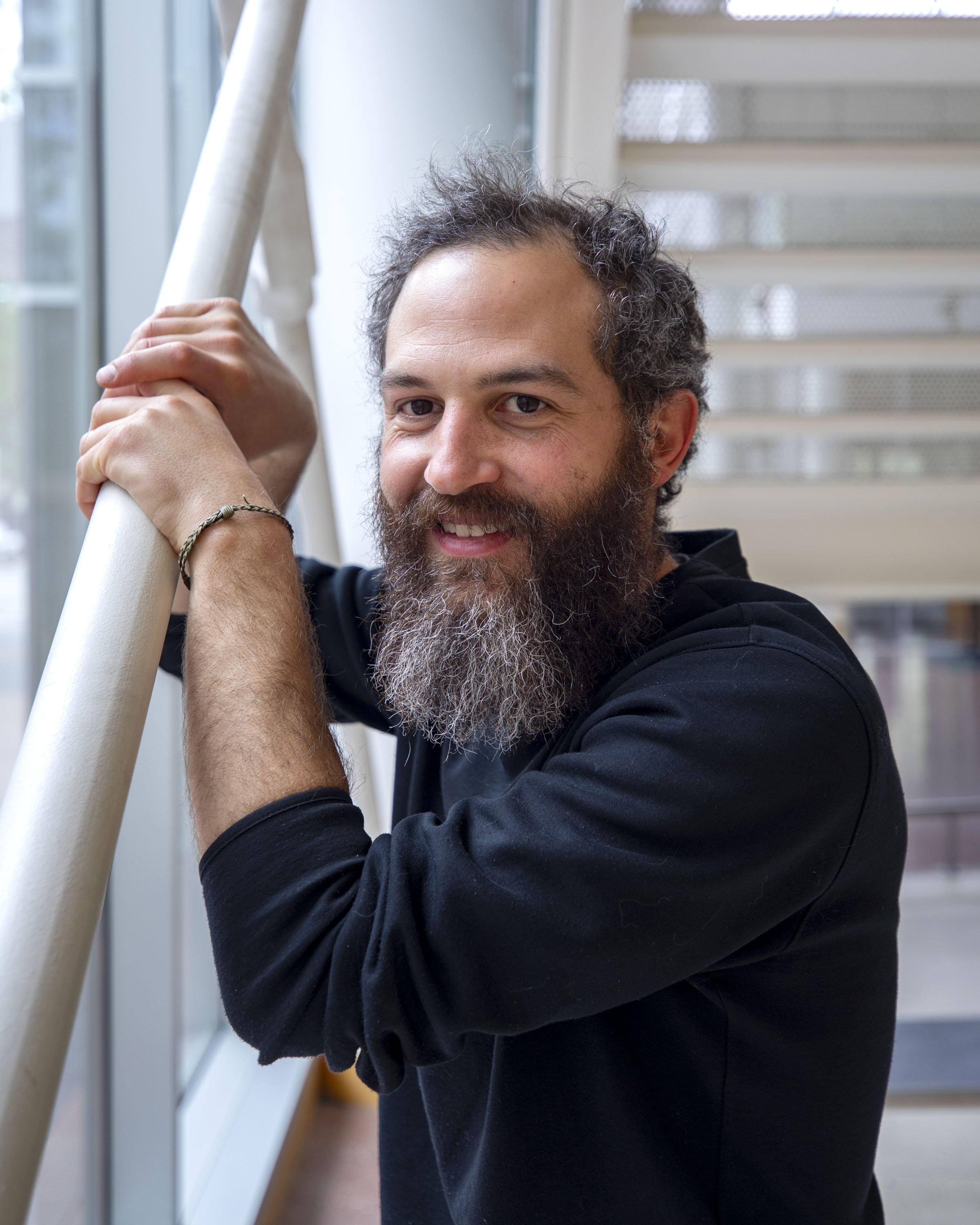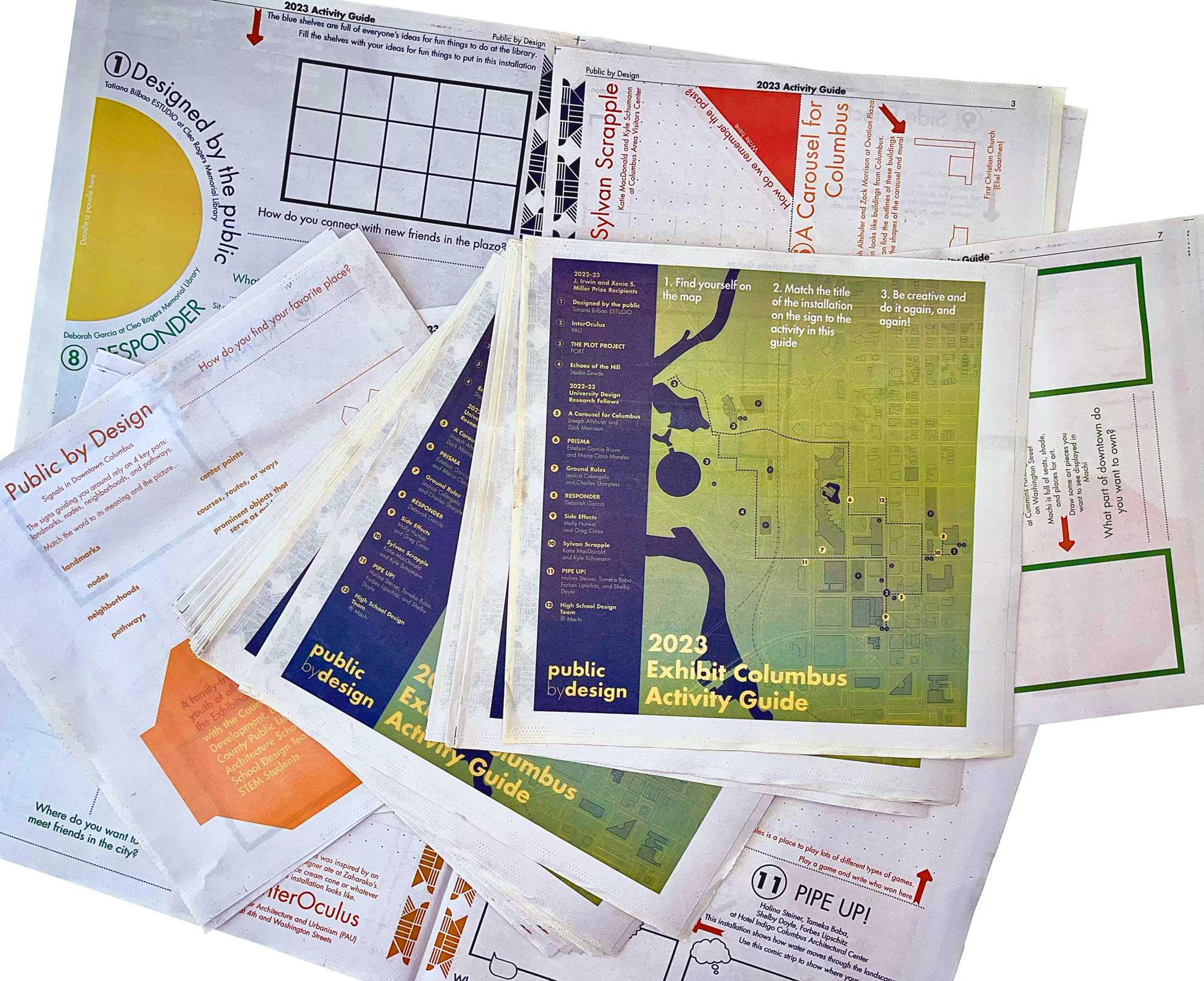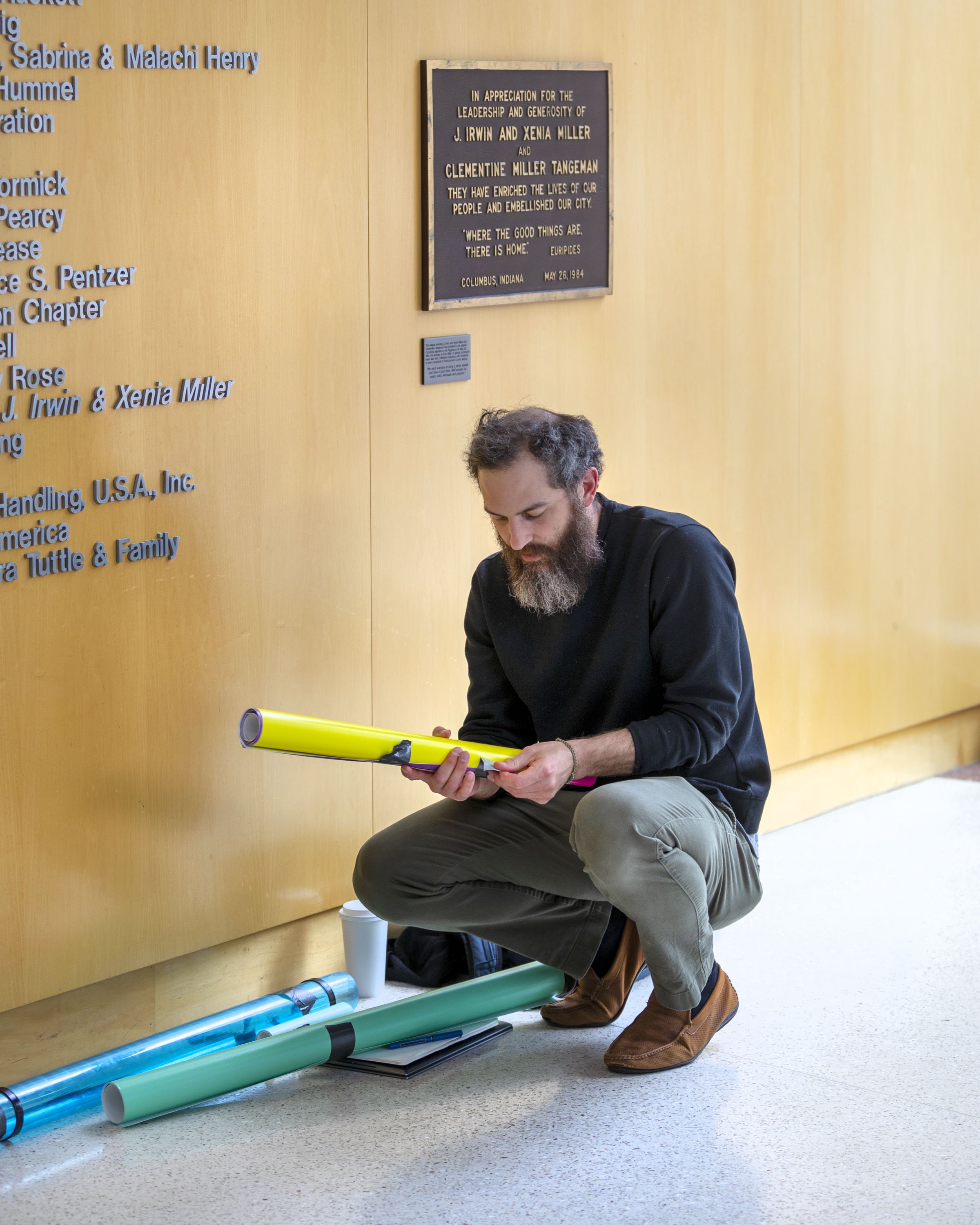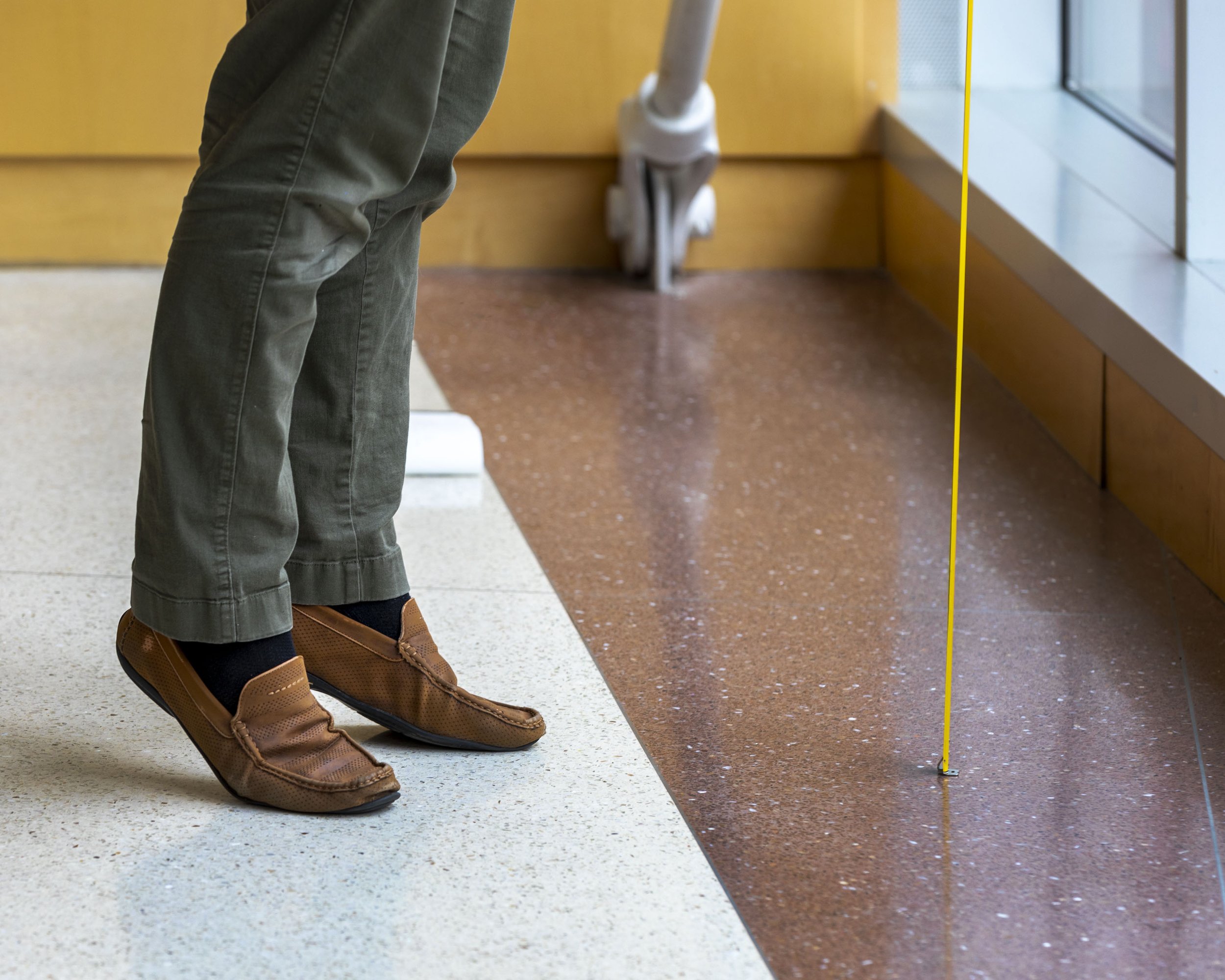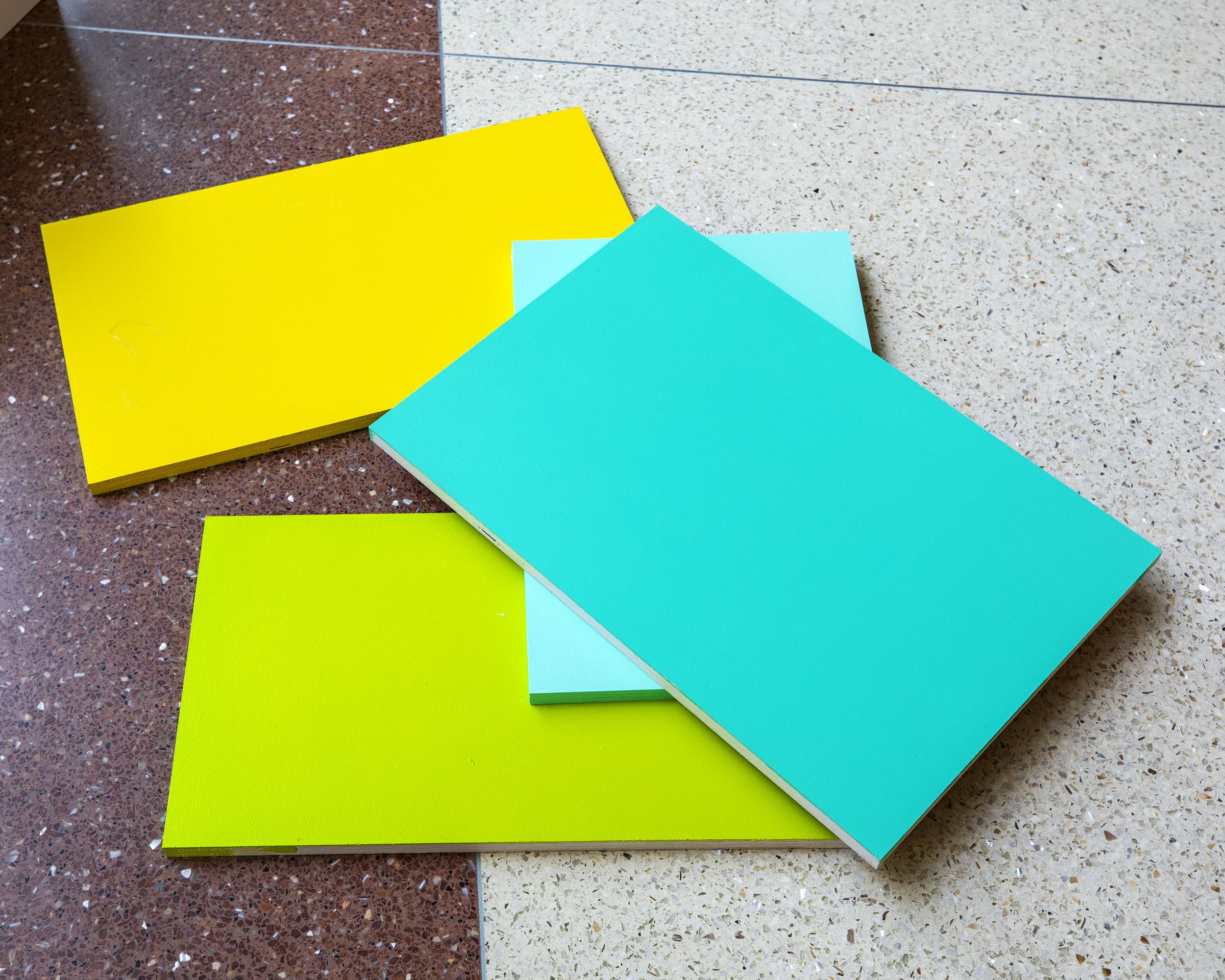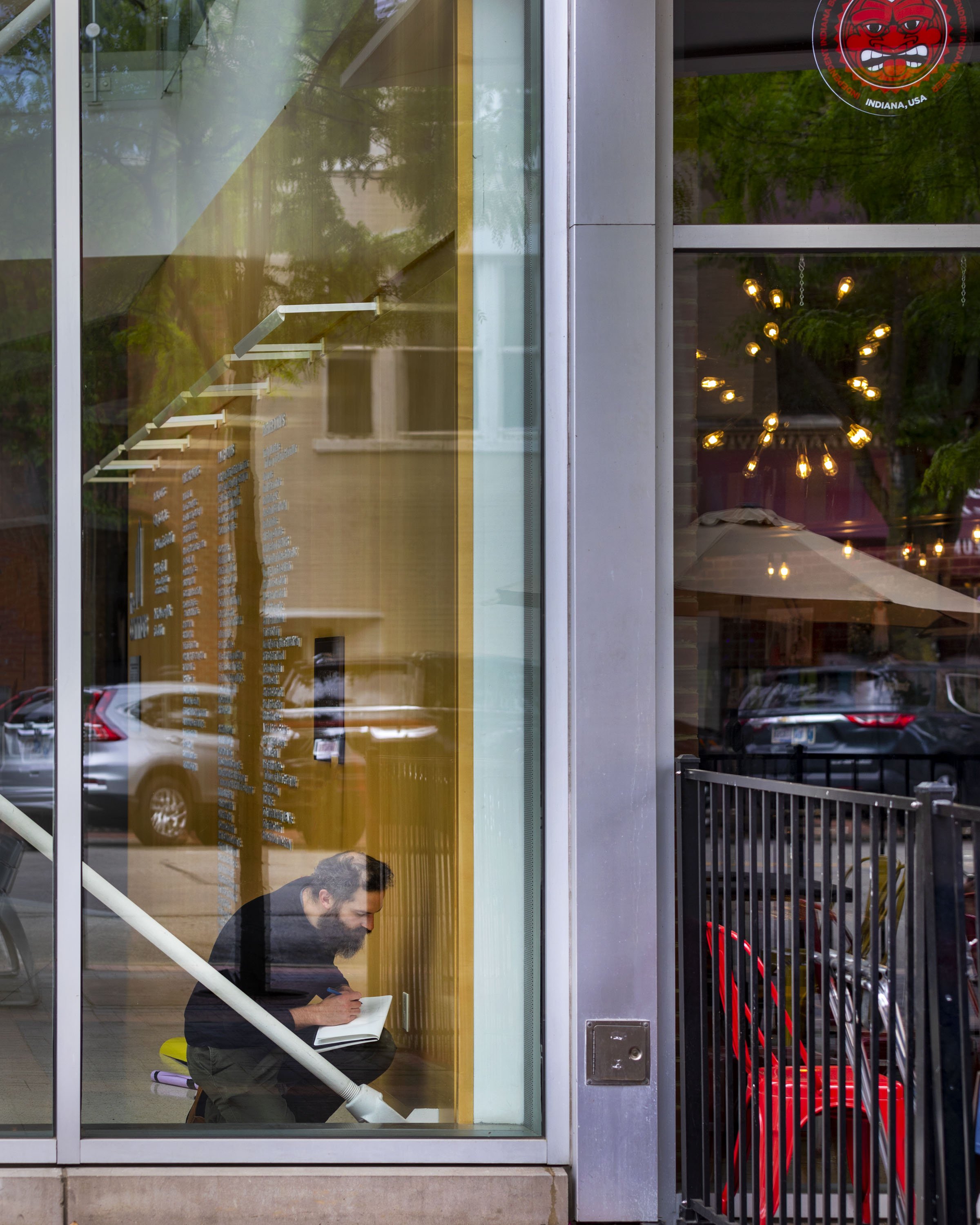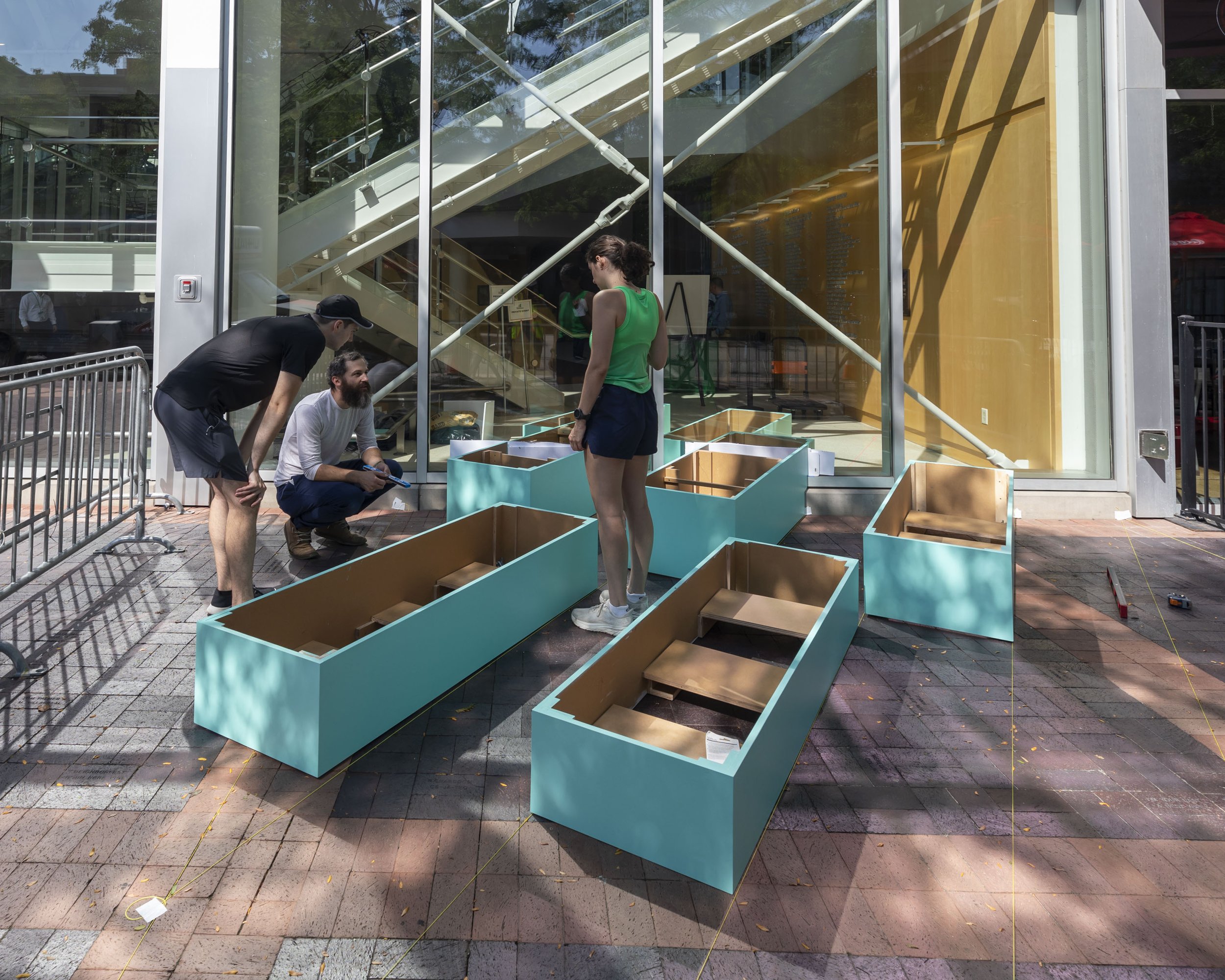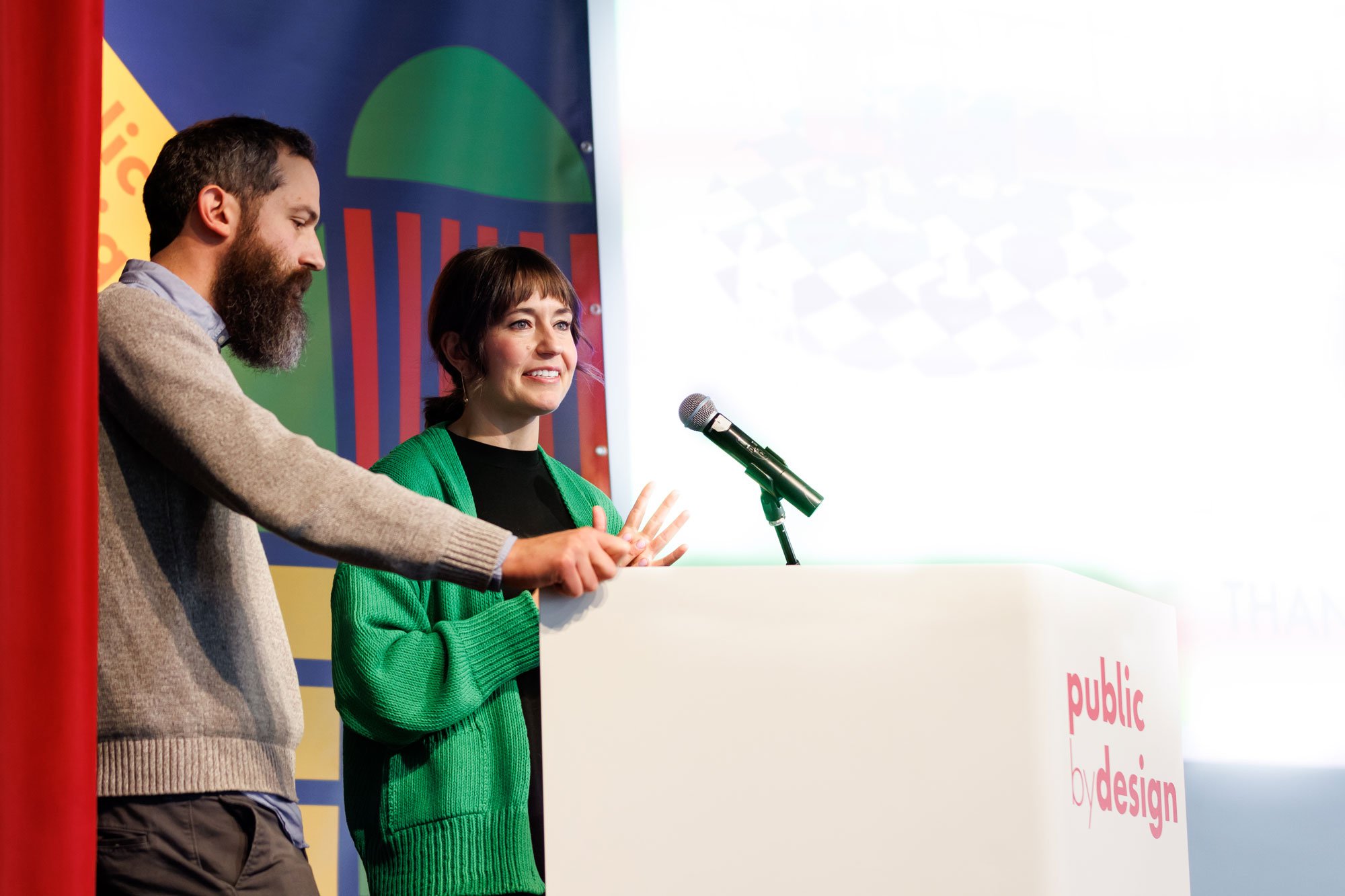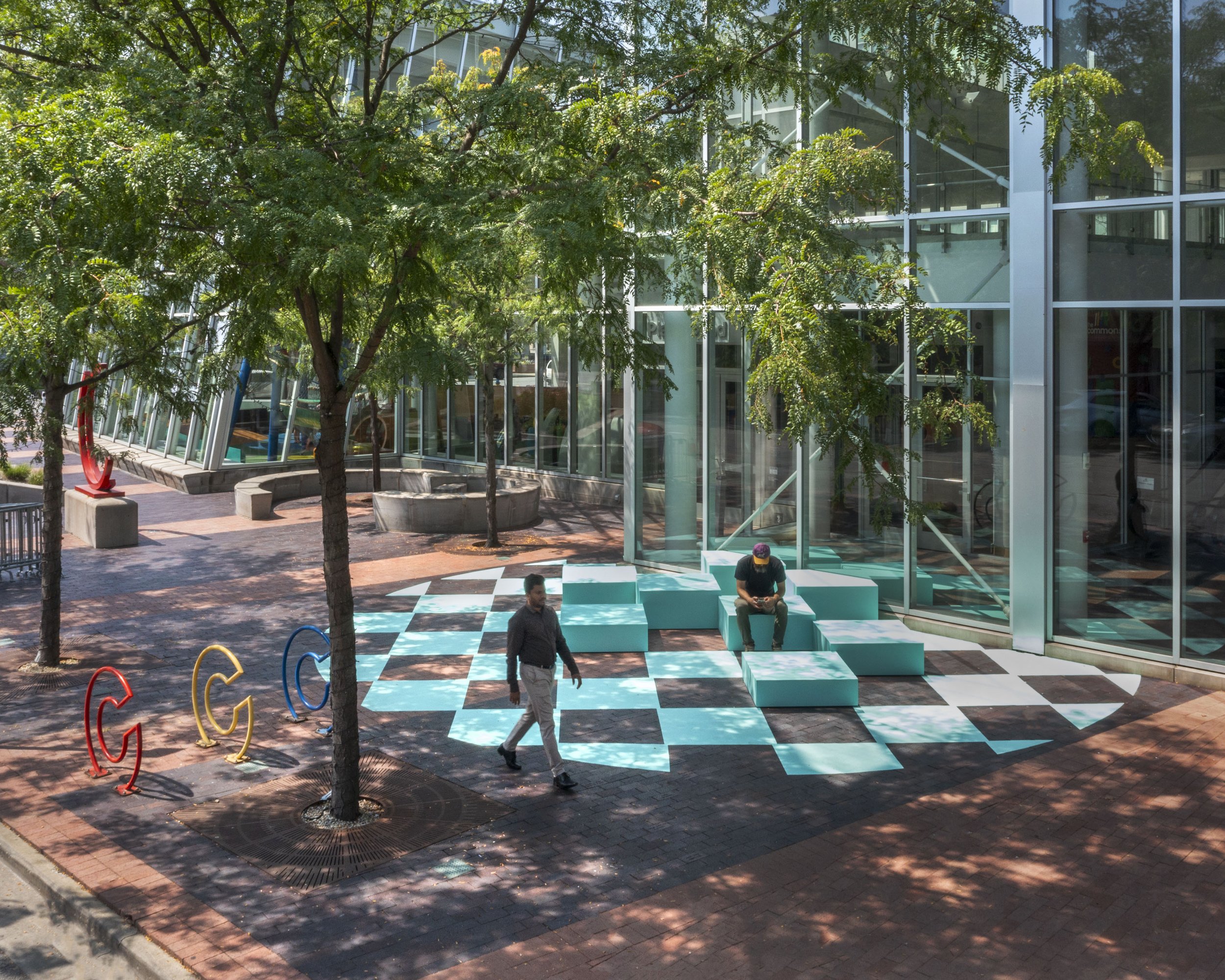
UDRF
●
Molly Hunker and Greg Corso
●
Side Effects
●
Presented by Columbus Area Visitors Center
●
UDRF ● Molly Hunker and Greg Corso ● Side Effects ● Presented by Columbus Area Visitors Center ●
Side Effects learns from two qualities of Columbus’ special design legacy—the high-contrast patterns developed by Alexander Girard and the indoor-outdoor continuity deployed by Modernist architectural design—to strengthen the visual and social connection in spaces downtown. This installation also offers a new identity and potential for use at the space on Washington Street.
The project consists of two large, brightly-colored, and patterned shapes that break down the boundary of the interior and exterior. By connecting through the glass, the project aims to create a “continuous” public space that simultaneously serves adjacent indoor programs and outdoor activities. 2D elements of the pattern create a new informal public space while maintaining public right-of-way and accessibility. 3D elements add seating to The Commons main entrance.
Accessibility
The exhibit space is fully accessible.
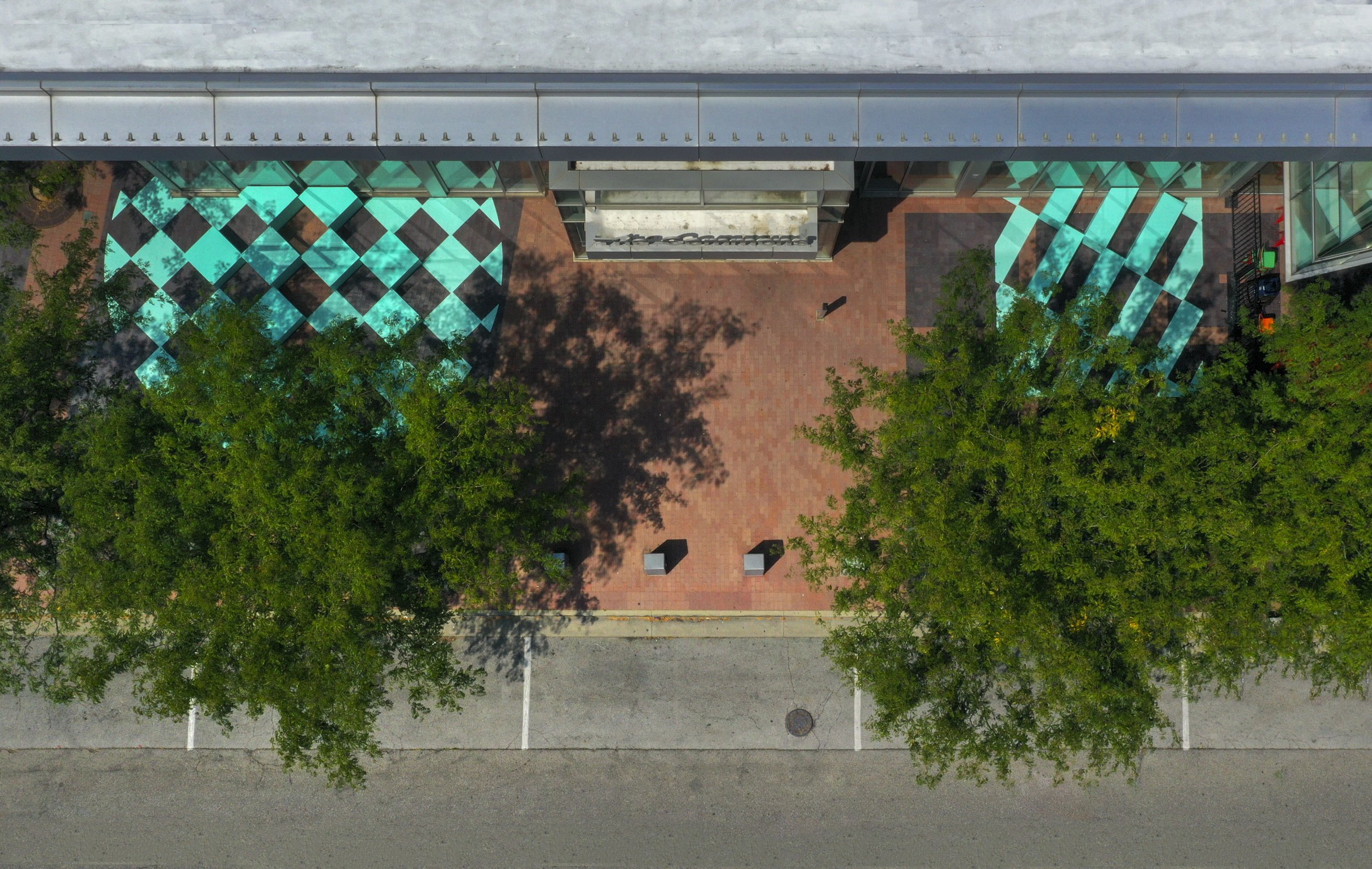
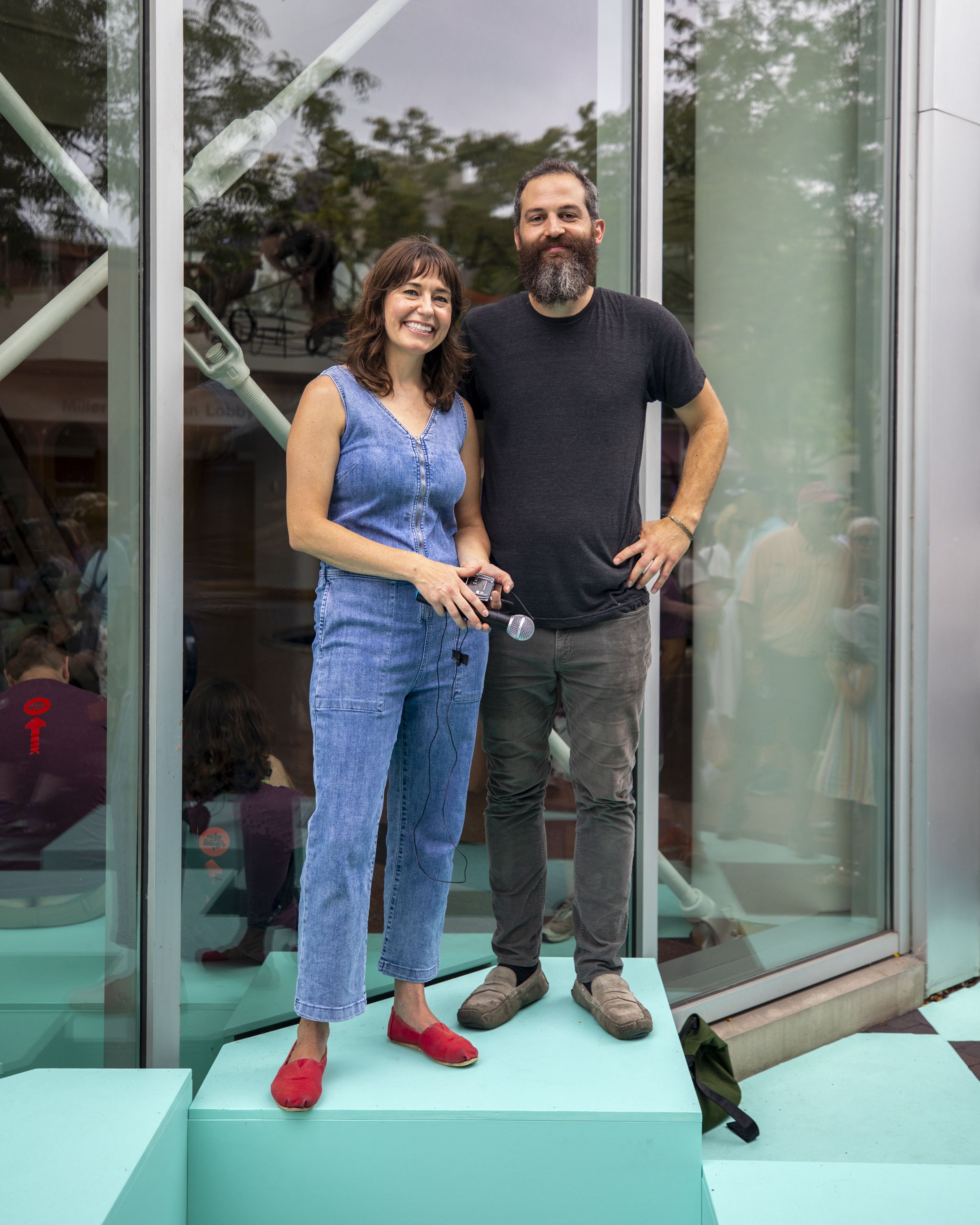
Where do you meet in the city?
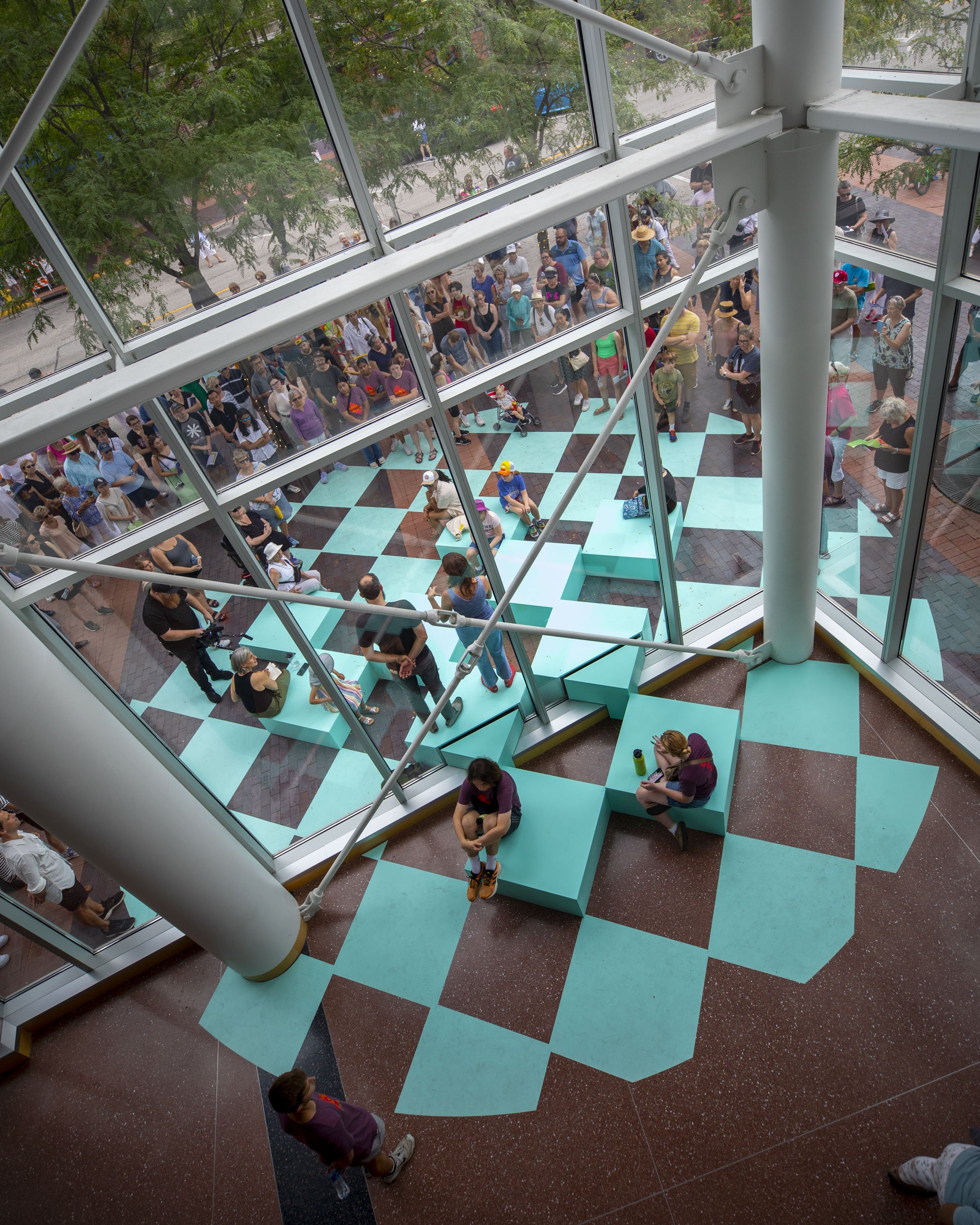
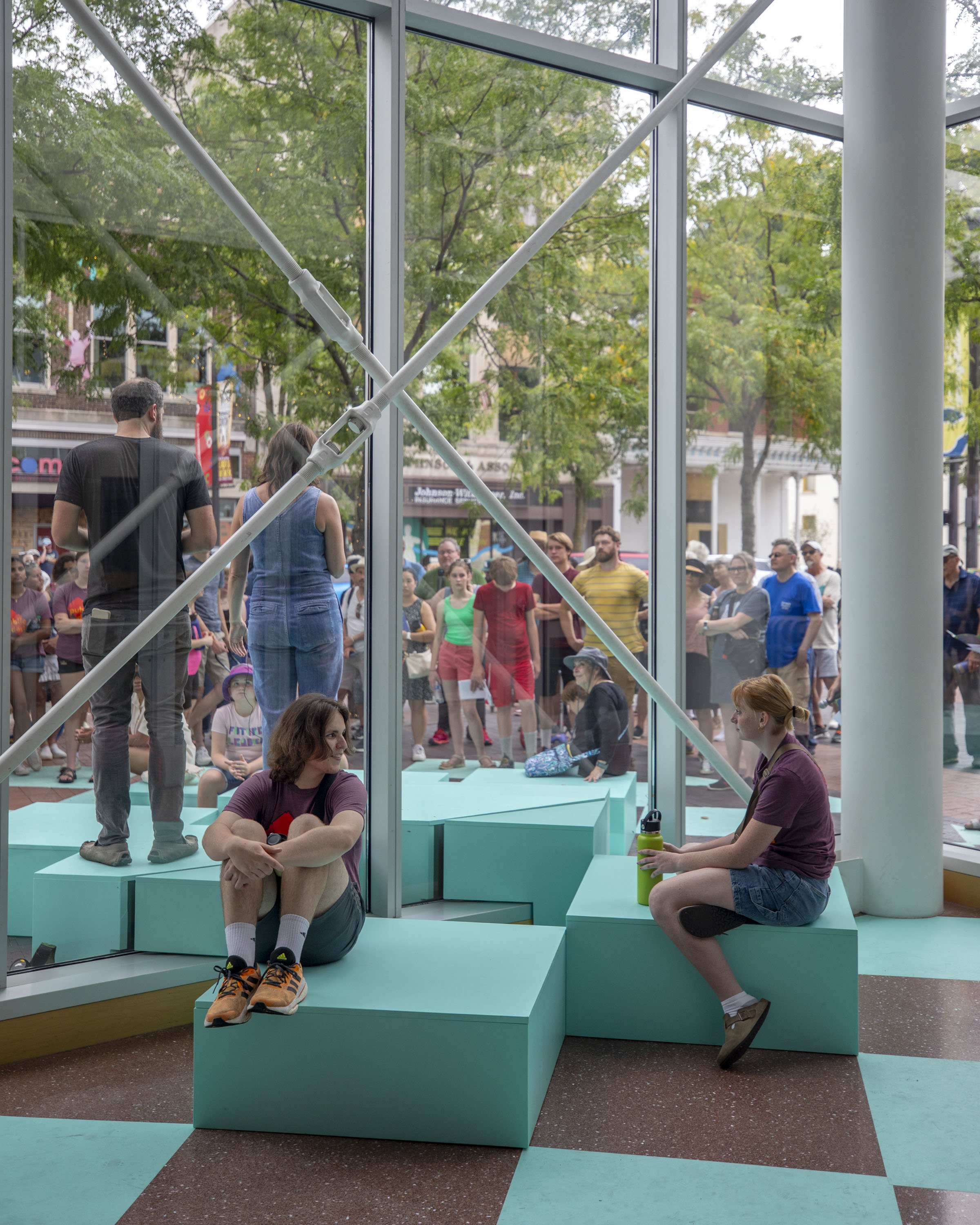
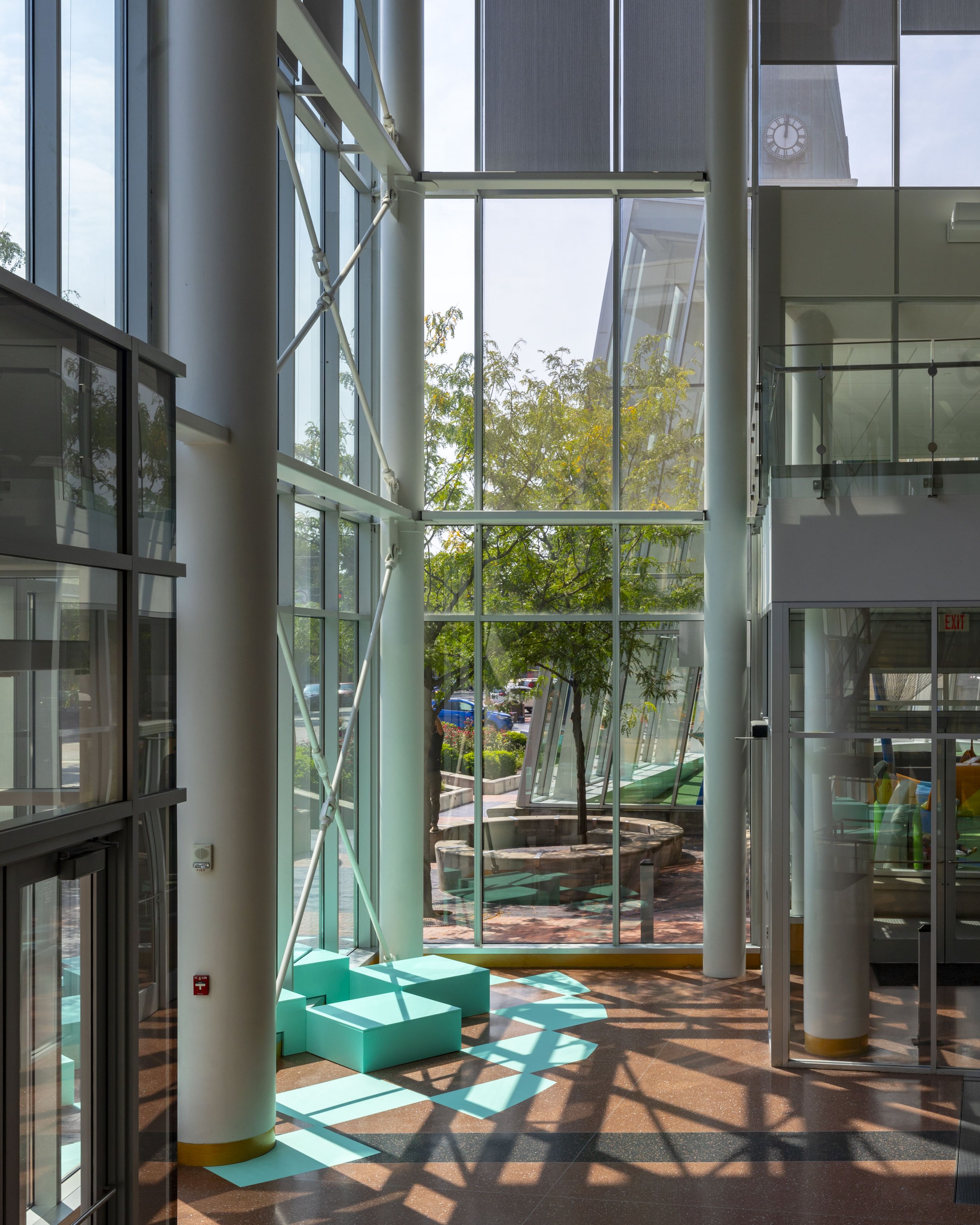
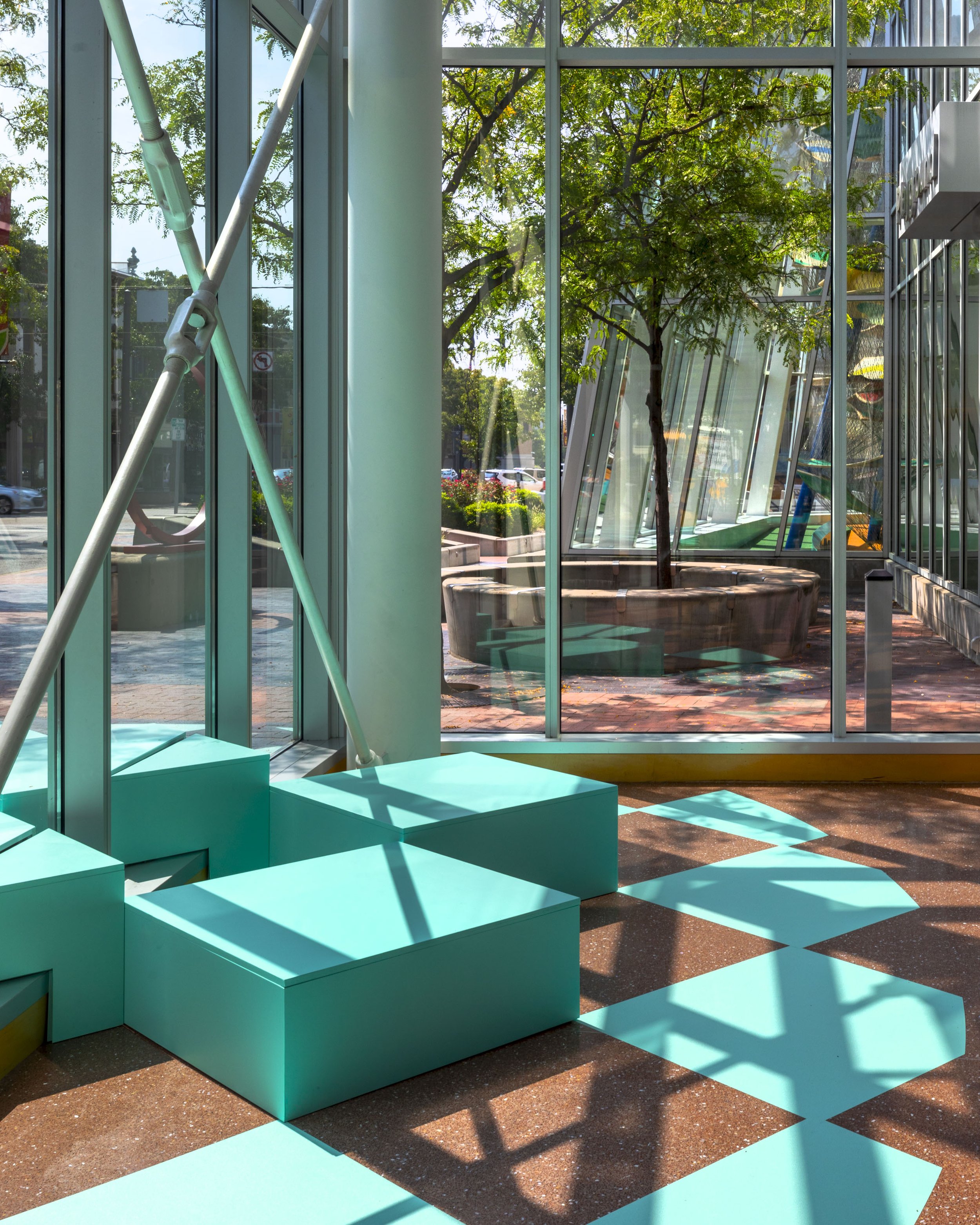
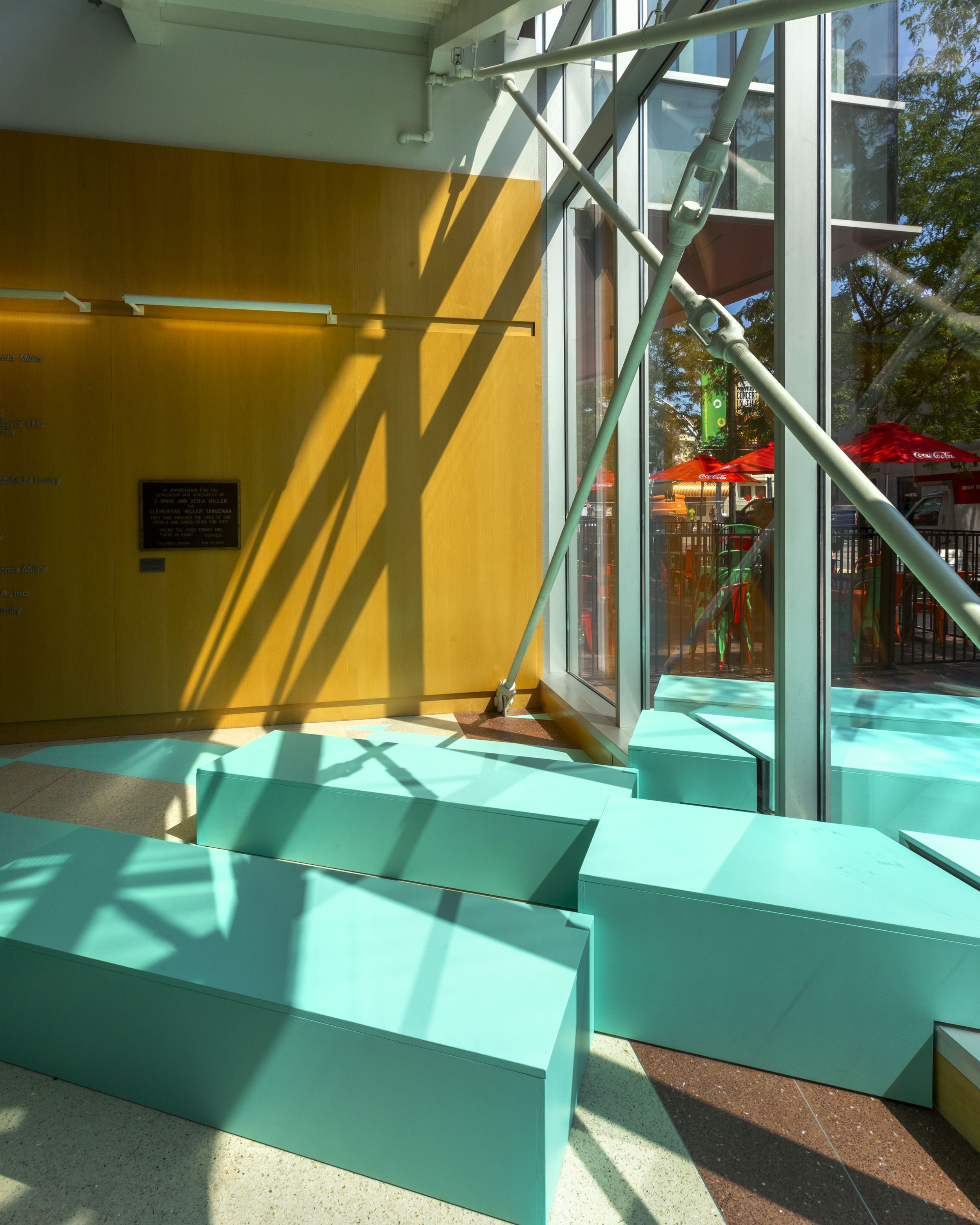
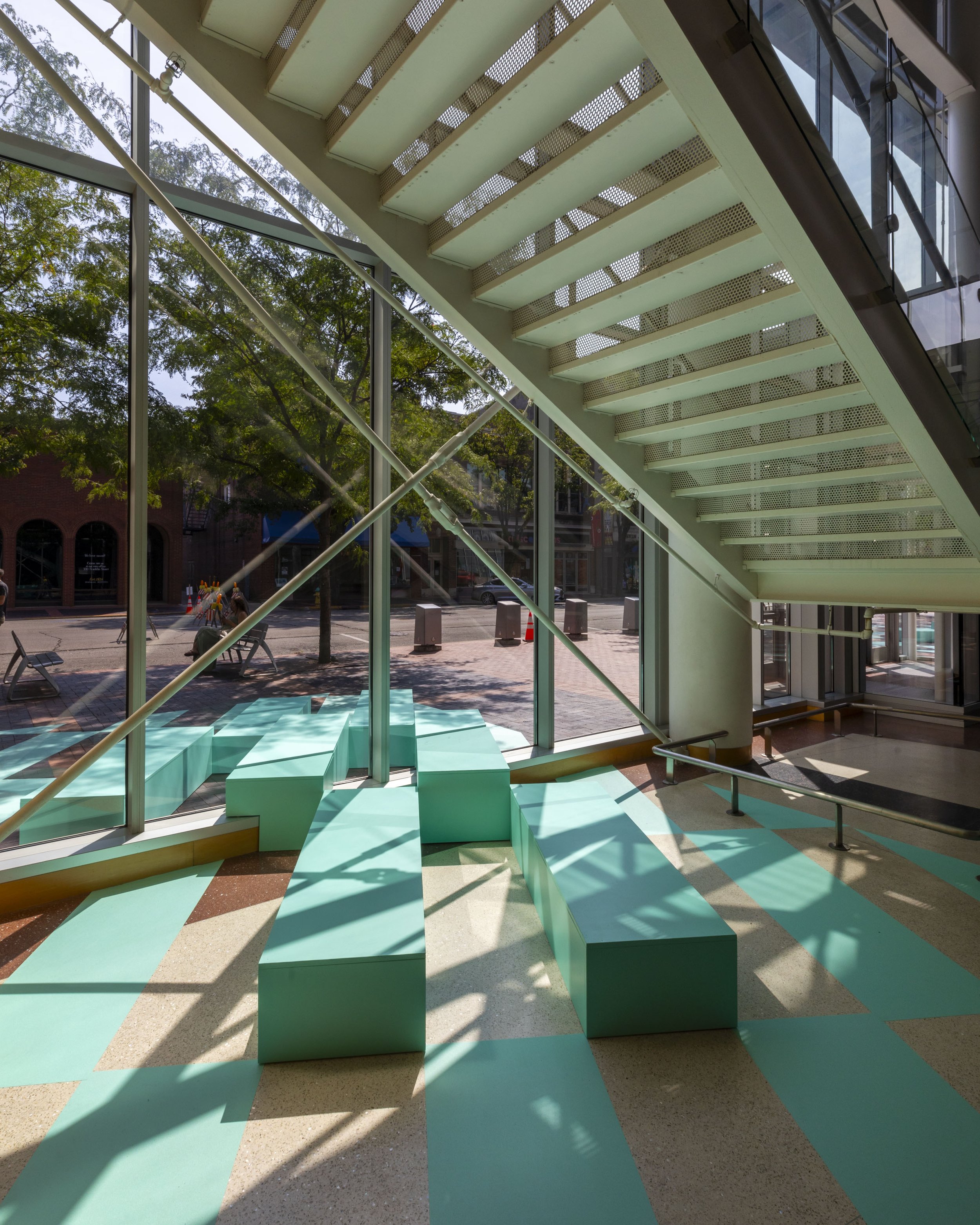

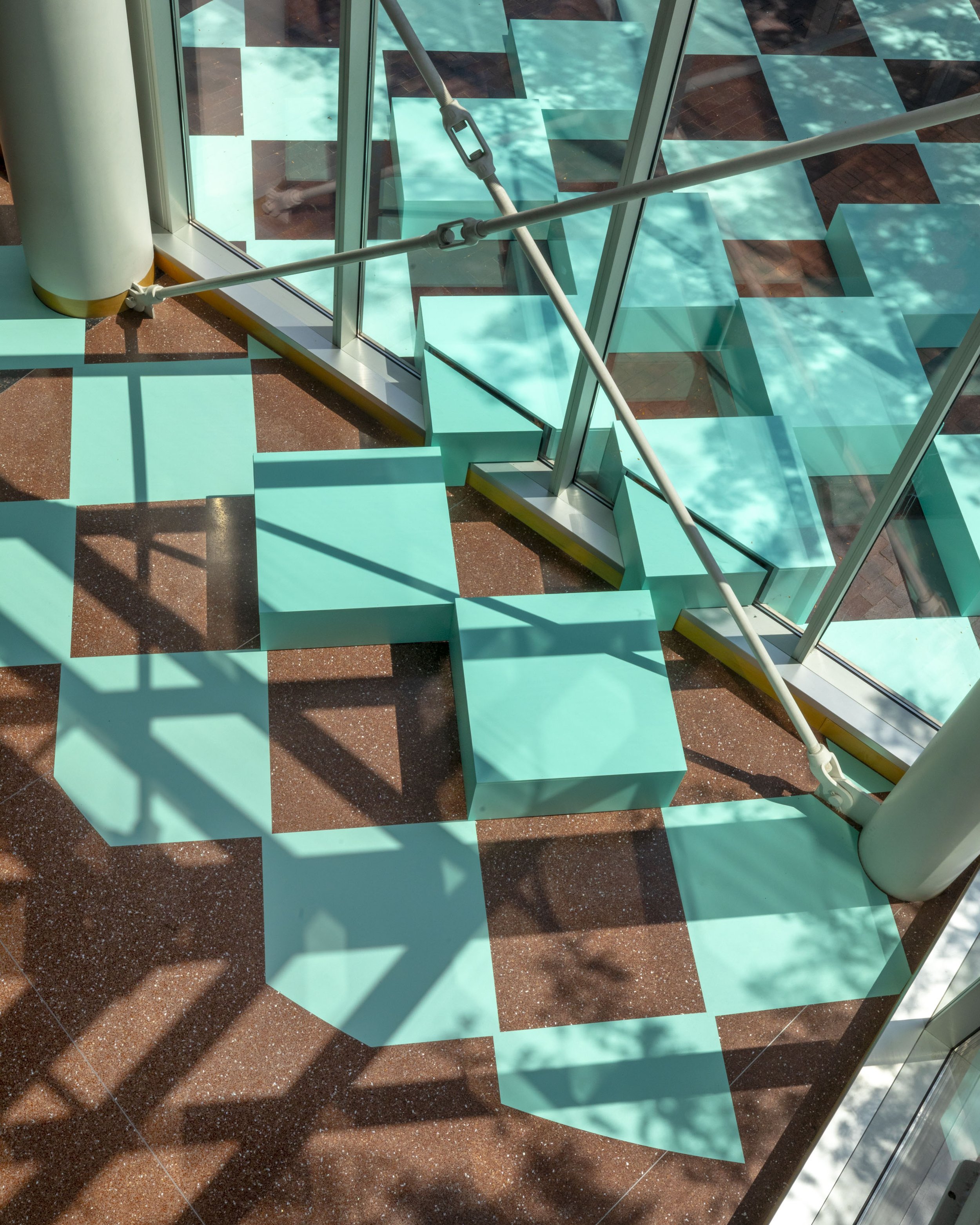
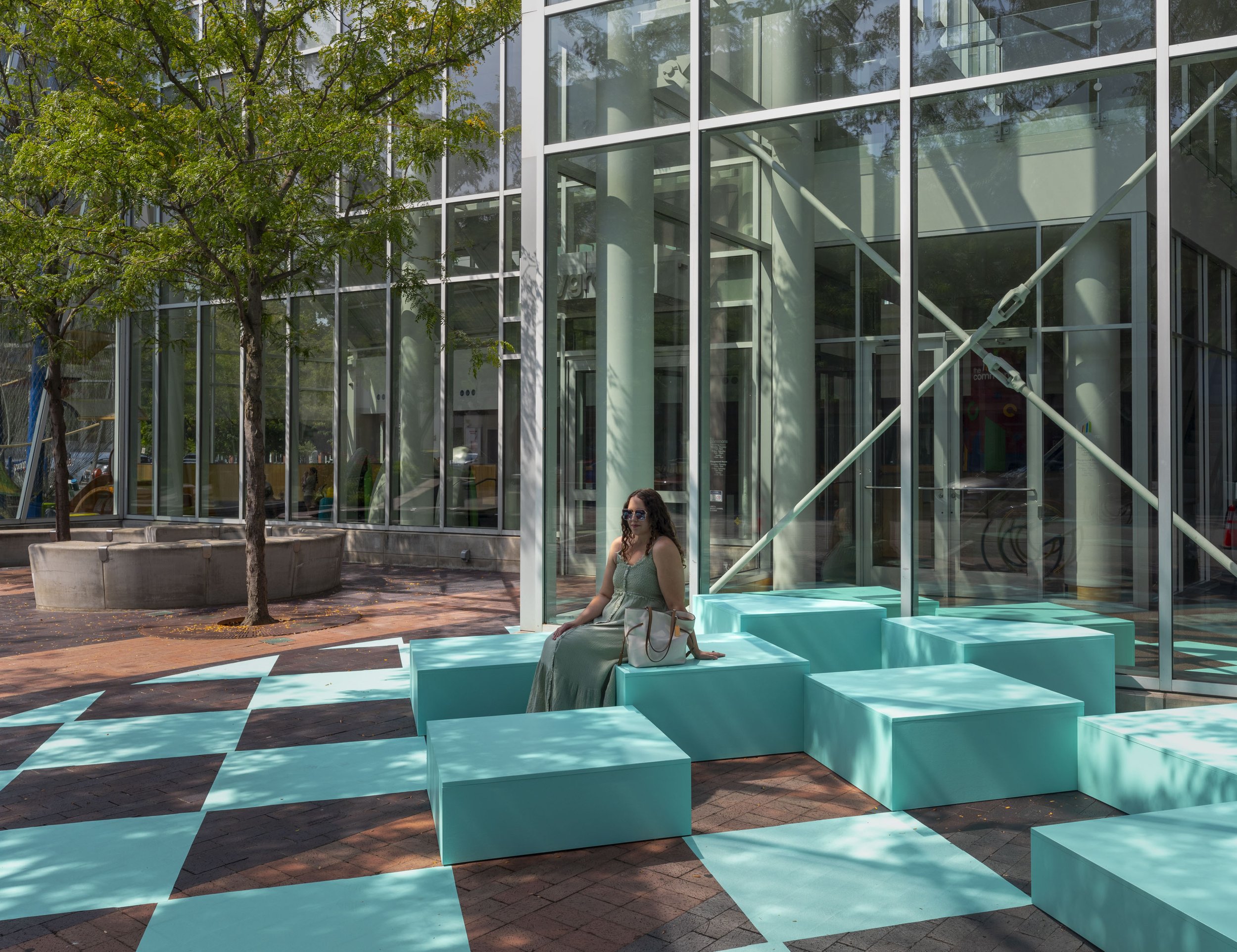
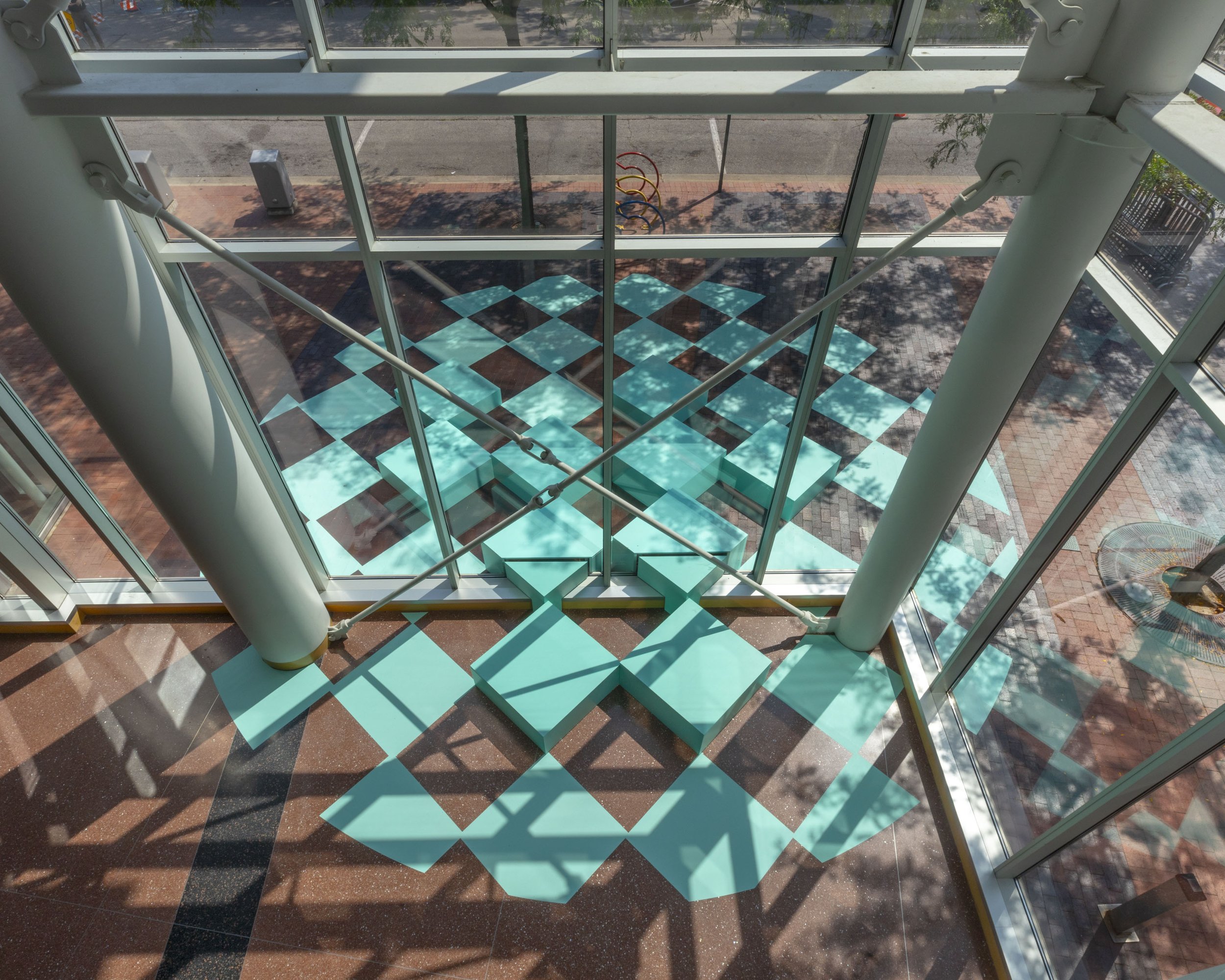

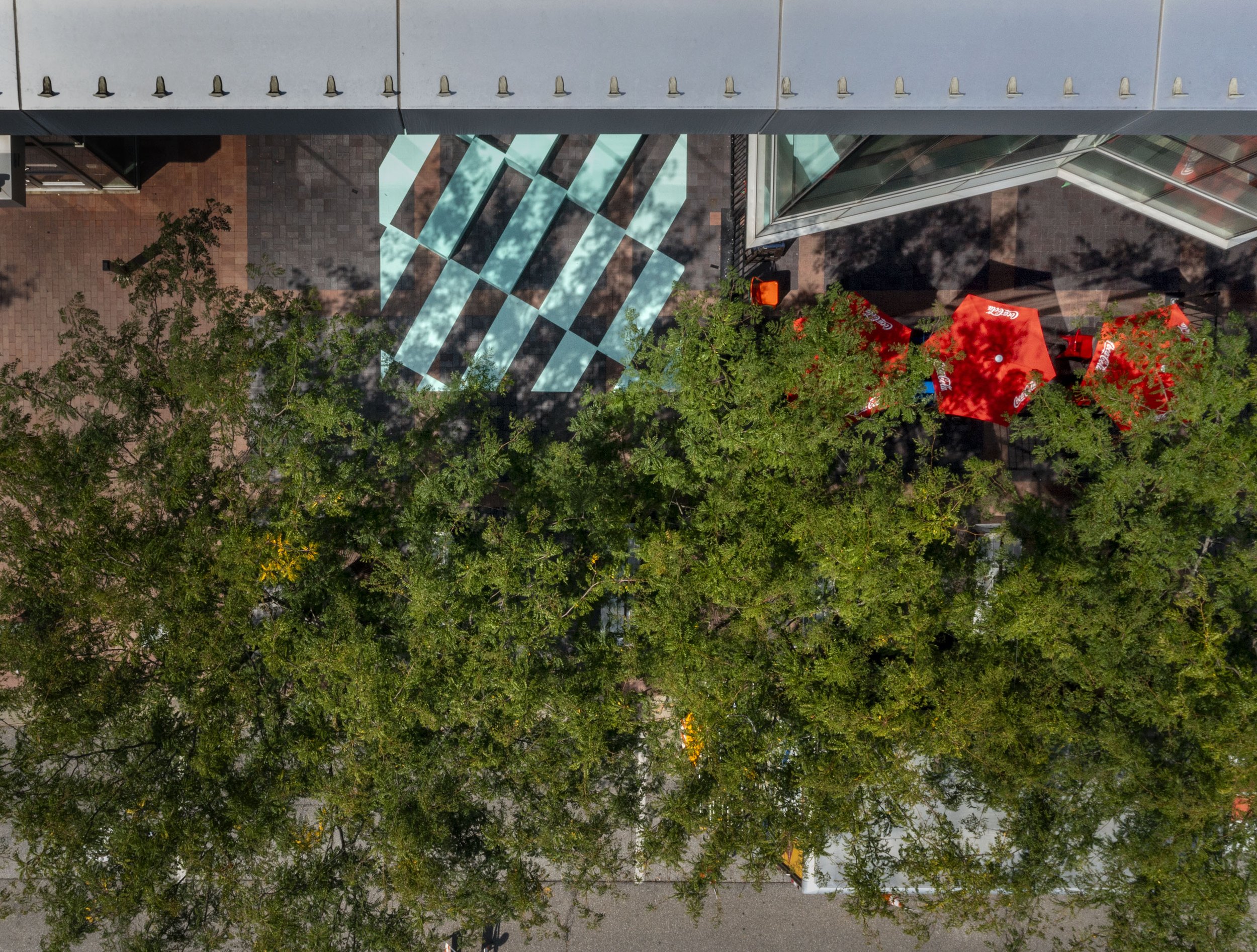
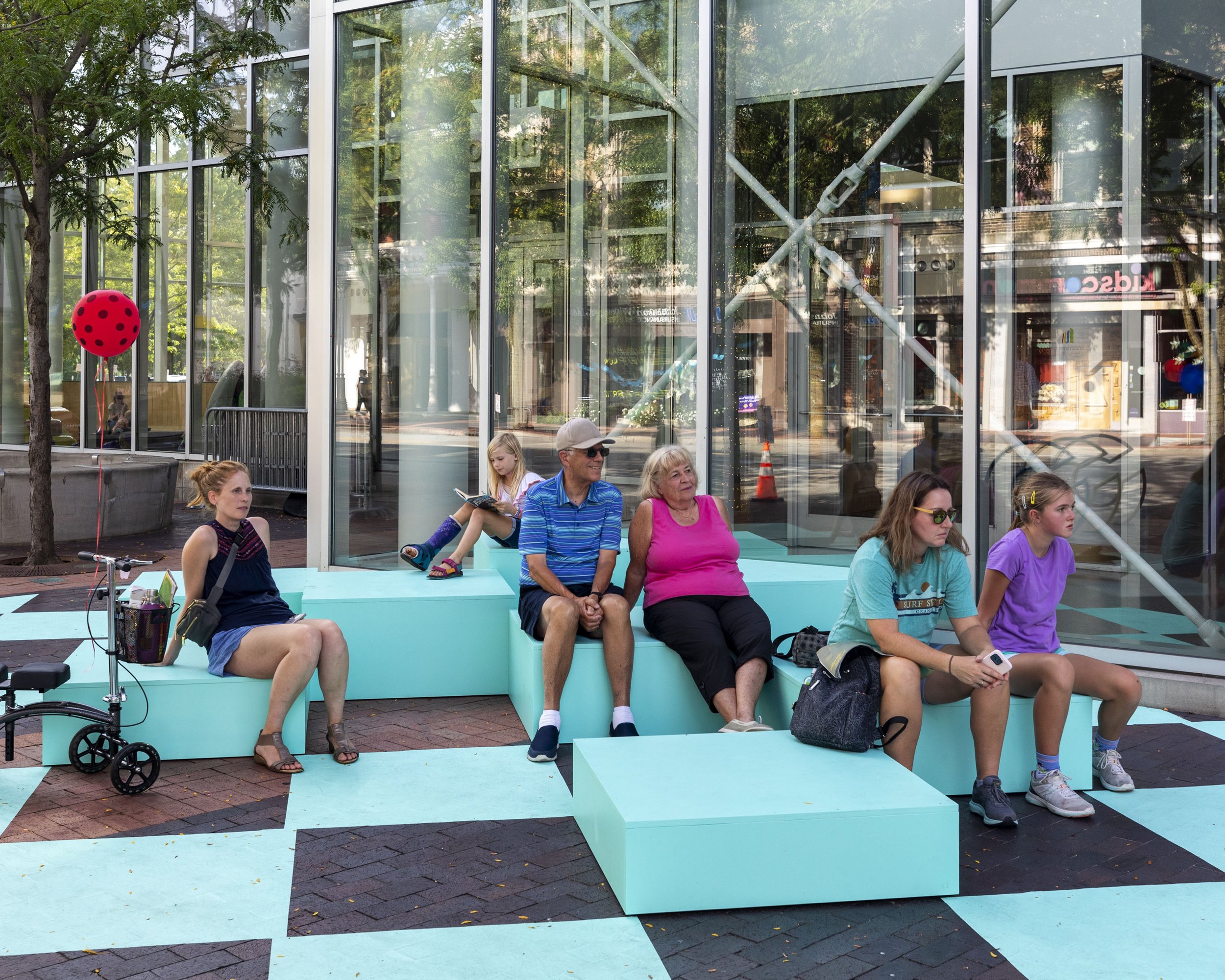
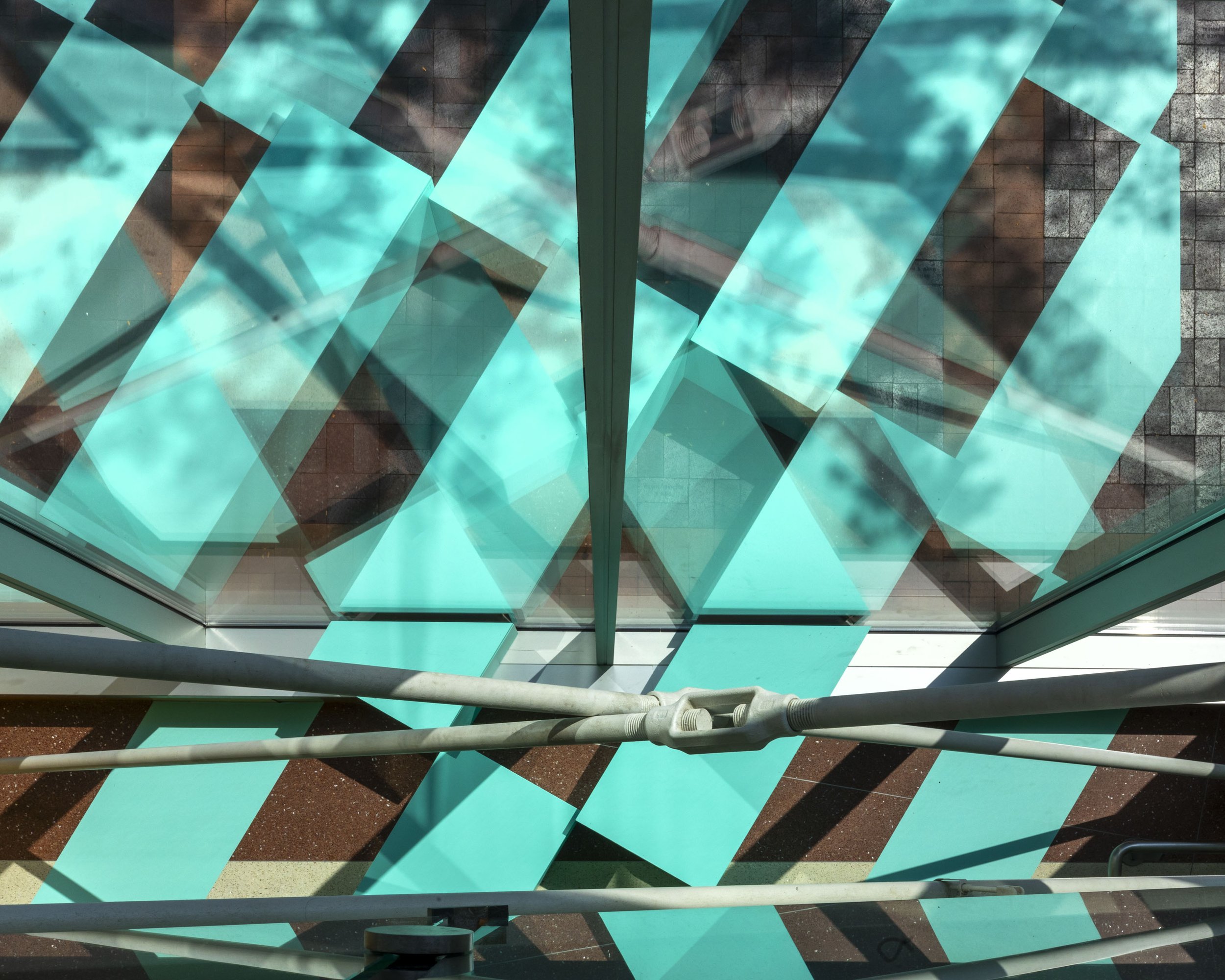
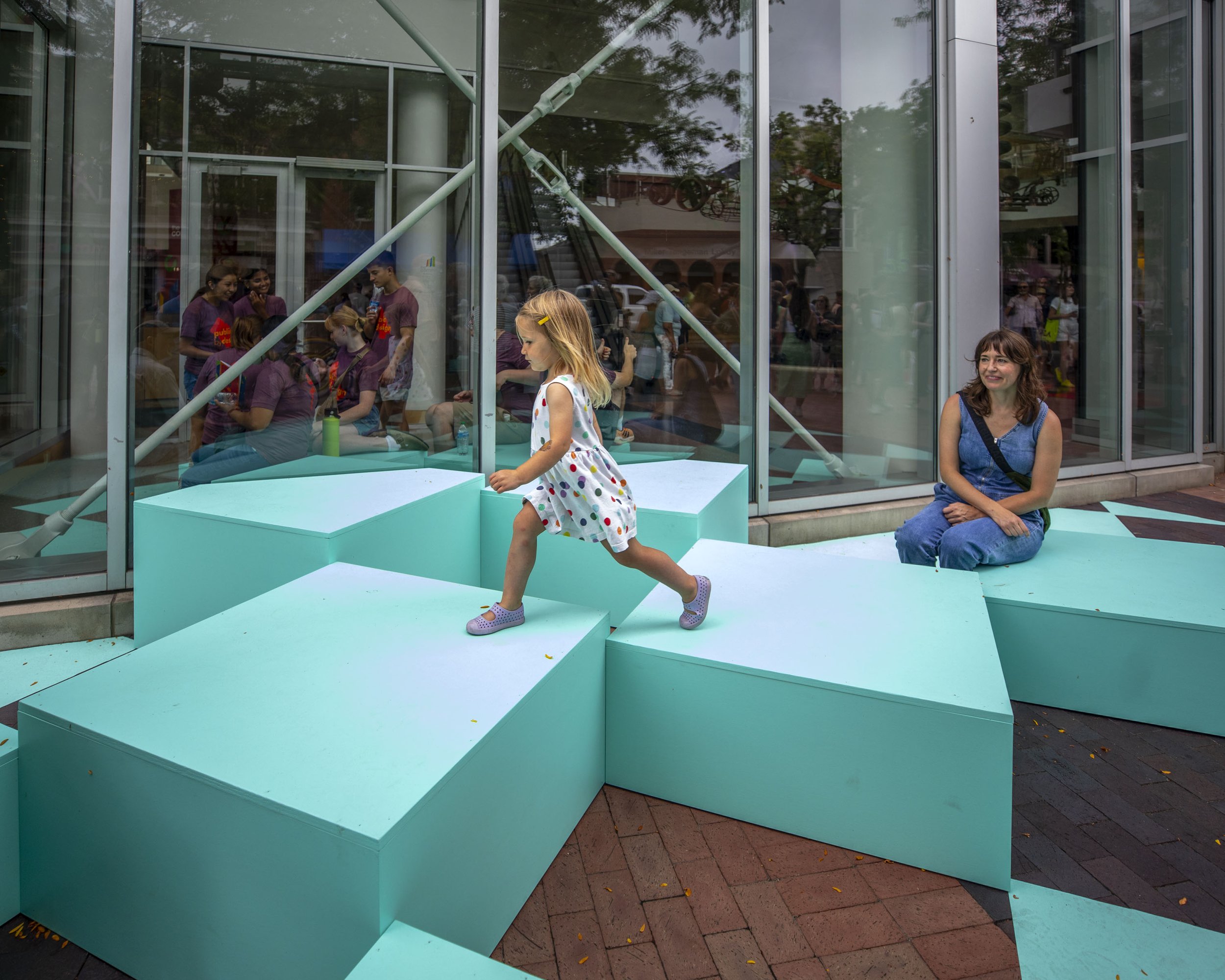
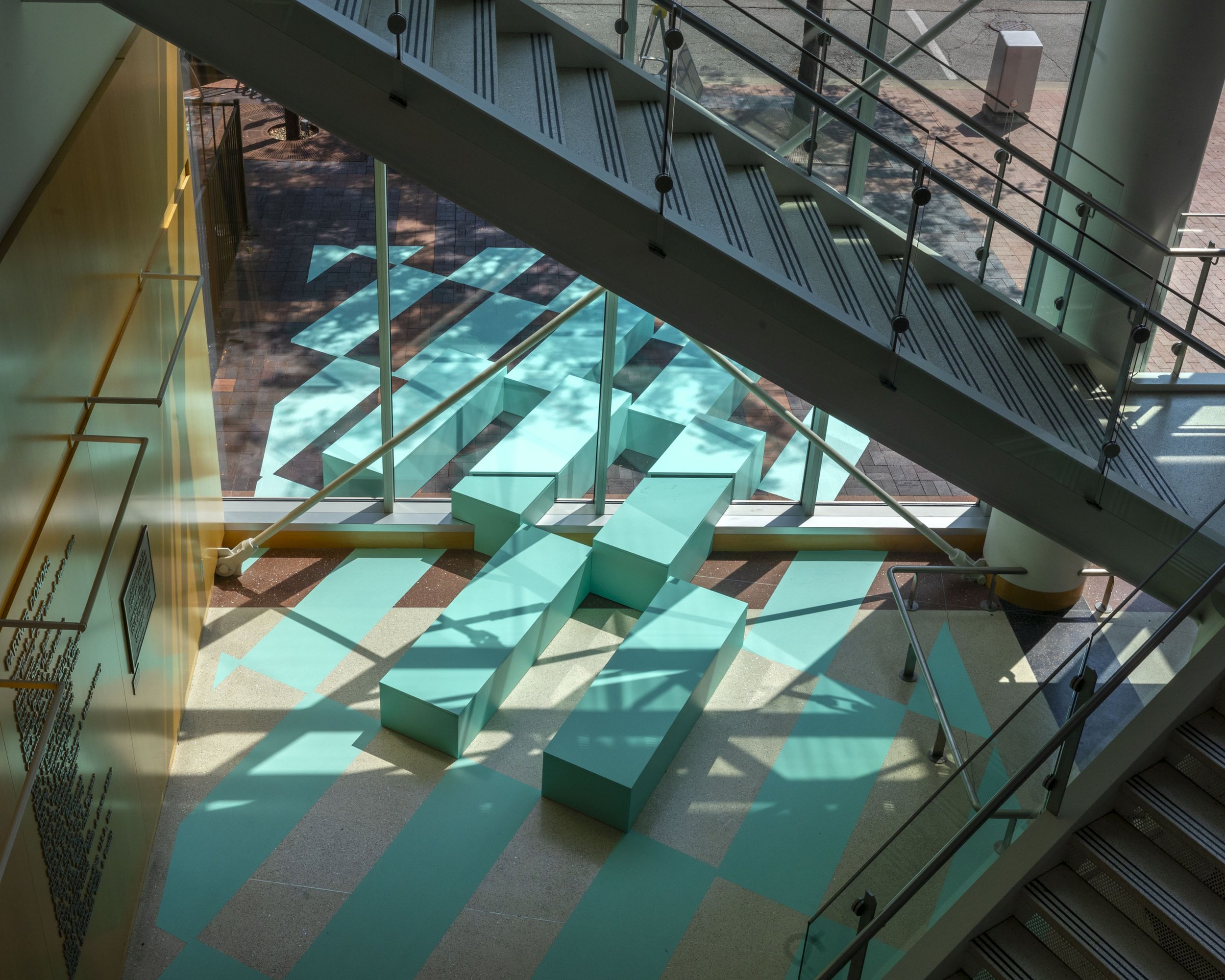
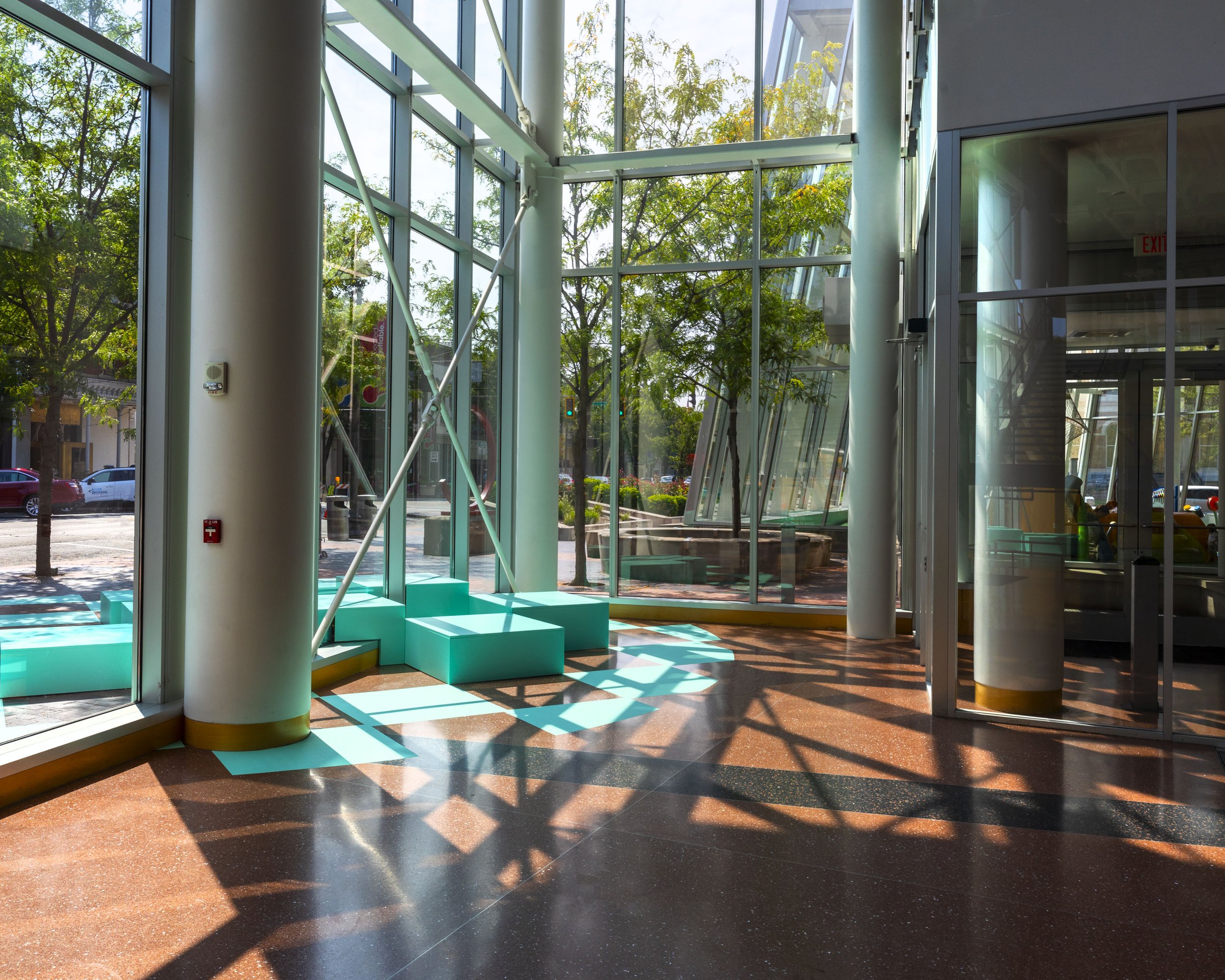
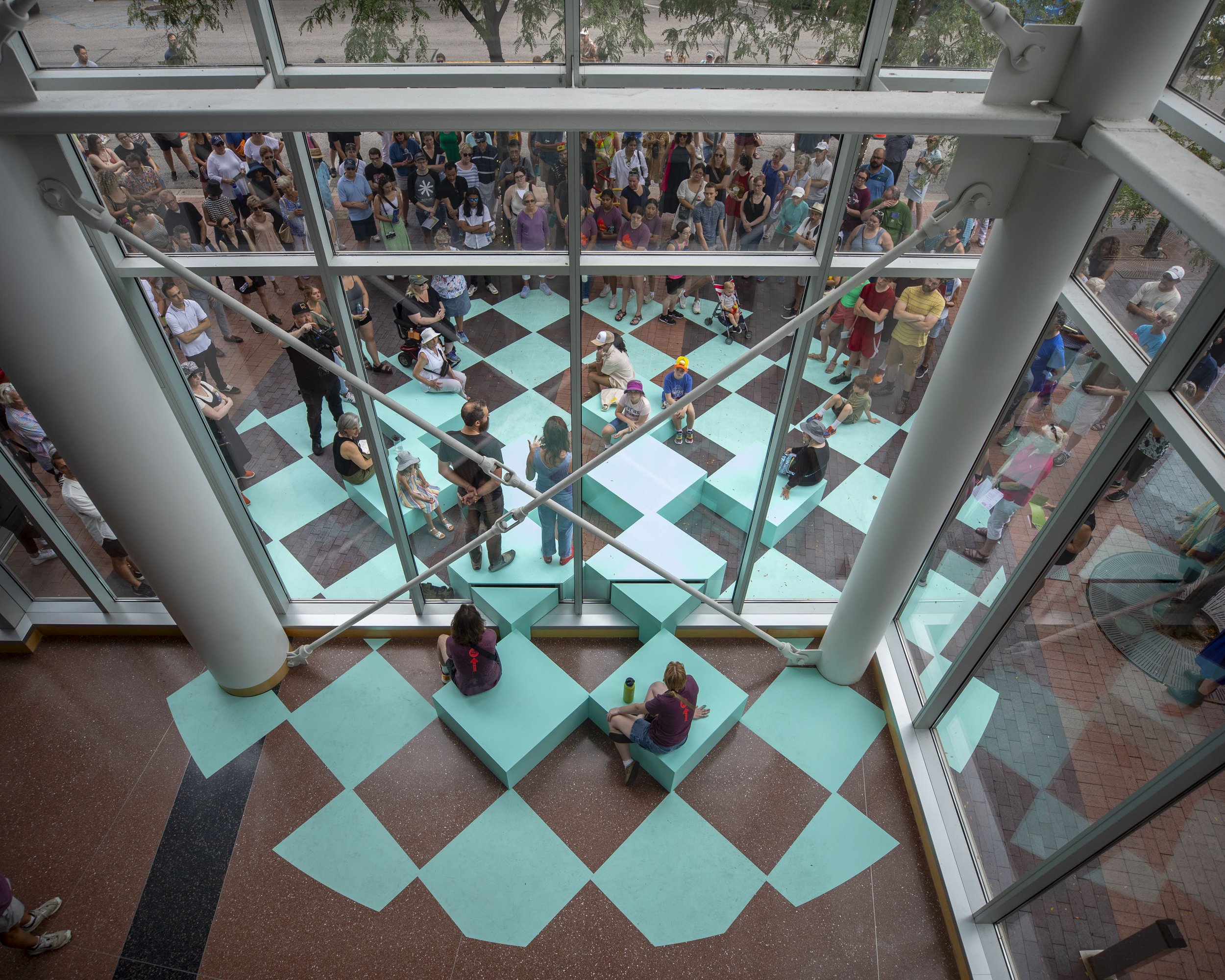
Side Effects Installation Credits
University Design Research Fellowship
Presented by
Columbus Area Visitors Center
Site and Collaborator
The Commons
University
Syracuse University School of Architecture
Team
Greg Corso
Molly Hunker
Sarah Hanna
Troy Schleich
Materials
Medium density overlay material, Paint, Vinyl
Fabrication Supporters
John Bryant, SU SoA Wood Shop / Fabrication Technician
Michael Giannattasio, SU SoA Fabrication Manager
Knowhow Shop
Additional Credits
Syracuse University School of Architecture
SU SoA Dean Michael Speaks
Site and Collaborator: The Commons
Curatorial Question
Where do you meet in the city?
“Here, people without a direct connection with the design world care about and appreciate design.”
Molly Hunker grew up with a brother and a sister in Wyoming. Her parents were mountain guides and farmers, so her childhood was filled with wandering in nature and exploring the landscape around her. Greg Corso is from California, where he grew up with an older brother. His childhood was one of skateboarding and developing a unique way of looking at the urban surfaces around him.
They say that while their families appreciated and supported art and architecture, it wasn't at the forefront of their childhoods. Creativity was, however, as well as perhaps the seed of architecture.
The couple now lives in Syracuse, New York, with their daughter and cat, who seems to like architecture, too. Their daughter likes to build strange houses and cities with her blocks, and their cat snuggles up in the odd and forgotten nooks of their 1920s home.
Neither of them studied architecture as undergraduates, instead coming to it much later. They feel lucky that their design careers were informed by their other interests and perspectives.
As an undergraduate, Molly double-majored in studio art and geography, and Greg majored in economics and minored in philosophy. They feel that architecture makes a lot of sense with all those ingredients. Several professors from the University of California Los Angeles in the early 2000s shaped how they saw their possible trajectory—small offices building interesting and strange work.
Their installation for Exhibit Columbus was informed by the context of the city and at The Commons' site. They were interested in the idea of interior and exterior connections, a tenet of a lot of modern architecture, and the uniqueness of The Commons as a site.
Most of their previous work has addressed unused or stagnant urban spaces to transform them into something productive. On the other hand, this project was a fun challenge because The Commons is already an active, vibrant place filled with local events and a playground for children, so the installation became more about reframing a well-known and well-used space and seeing it perform differently.
Communicating about design has recently become a focus. They have been asking themselves how they, as designers, communicate the value of design. How do they cultivate an audience for architecture outside of architects in the way food and fashion have?
They said they think this is why Columbus is such a special place. That this is incredible and hope it will be the norm in the United States someday.
This excerpt is from the 2023 Field Guide. Download it here.
Activity Guide for kids and families to explore the Exhibition.
Download the activity for the installation Side Effects. Print at home, or stop by any Infohub to pick up a free guide.
Creating Side Effects
2023 Design Presentations
Side Effects installation design concept by 2022–23 University Design Research Fellows Molly Hunker and Greg Corso from Syracuse University School of Architecture in Syracuse, New York.
“This theme makes us think of privileging possibilities, spontaneity, and the rediscovery of familiar places.” — Molly Hunker (right) and Greg Corso (left)
2022 Symposium
Molly Hunker in discussion with other UDRFellows and Curatorial Team at the 2022 Symposium in October. Take a look back at the 2022 Symposium here.
University Design Research Fellowship
Molly Hunker and Greg Corso
Syracuse University School of Architecture
Syracuse, New York
Molly Hunker is Assistant Professor at Syracuse University School of Architecture. She is also the Co-Captain of the practice, SPORTS, with Greg Corso. They approach design in a playful way, by balancing rigor and research with amusement and curiosity, and with the ambition to generate fresh and unexpected experiences of the built environment. She has worked for architecture studios and art workshops along the west coast including Doug Aitken Workshop, Talbot McLanahan Architecture, Weinstein A|U, and The LADG.
Greg Corso is Assistant Professor at Syracuse University School of Architecture. He is also the Co-Captain of the practice, SPORTS. Much of their work has been public interventions that leverage the possibility for straightforward and high-economy design gestures to have significant urban and community impacts. He has worked in art and architecture studios in the United States and Europe including Studio Gang, JDS Architects, and Cliff Garten Studio, and has been a Fellow at the MacDowell Colony.
Runaway is a mobile pavilion for the Museum of Contemporary Art, Santa Barbara in Santa Barbara, CA. (2017) Credit: Elliot Lowndes
City Thread is a public space that reinvisions an unused alley in downtown Chattanooga, TN. (2018) Credit: Benjamin Chase
Rounds is an outdoor theater pavilion for the Ragdale Foundation in Lake Forest, IL. (2016) Credit: Nick Zukauskas


